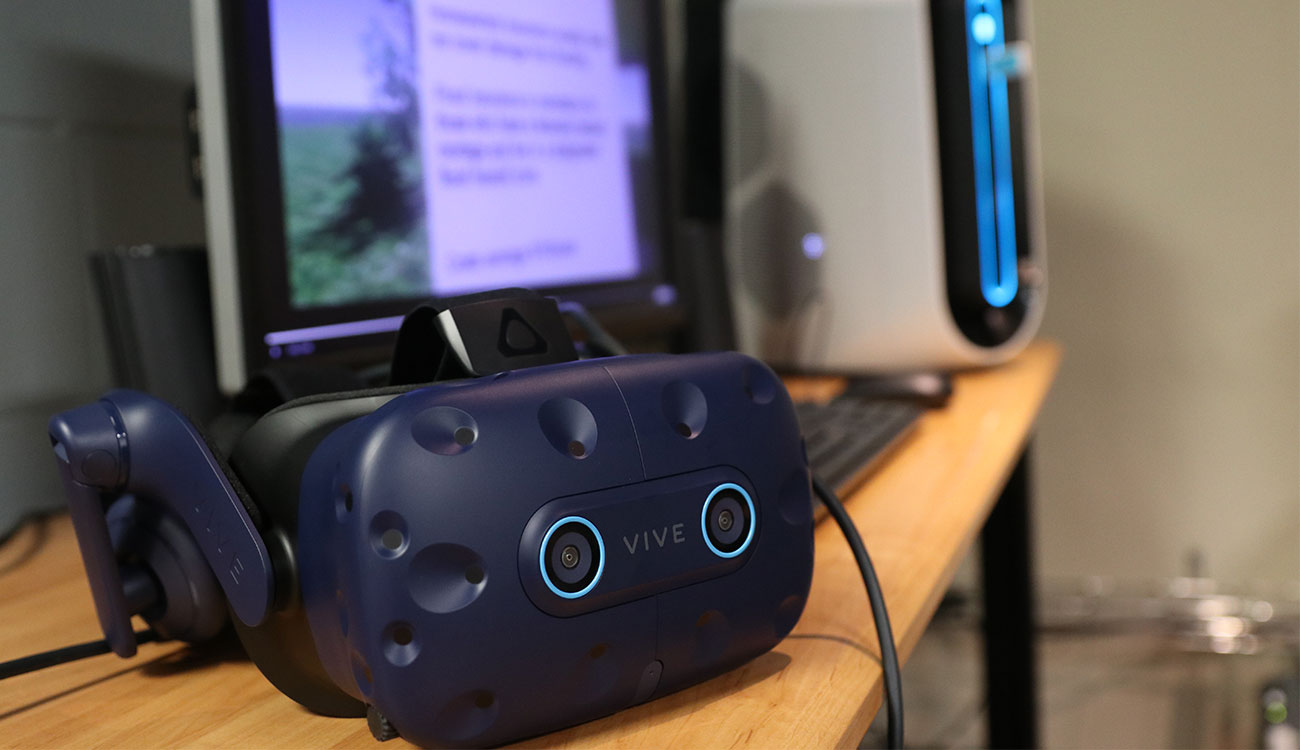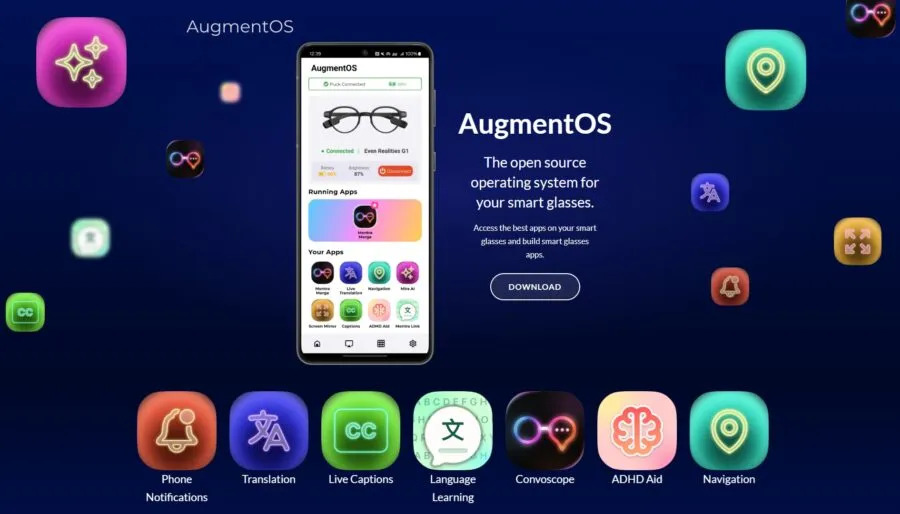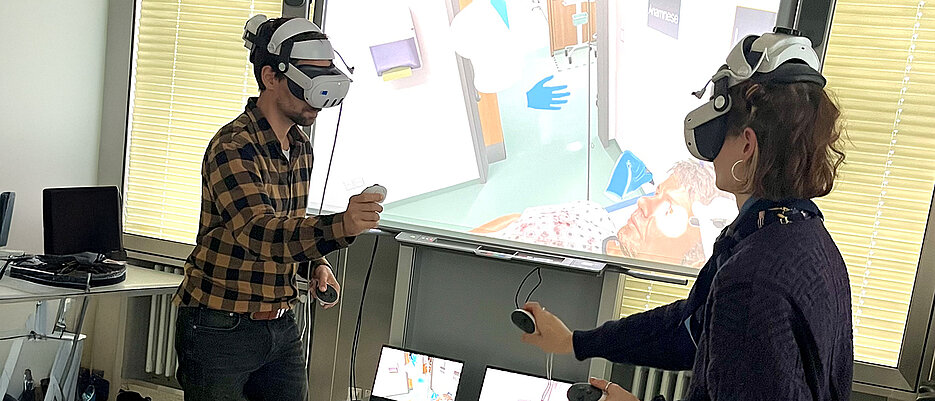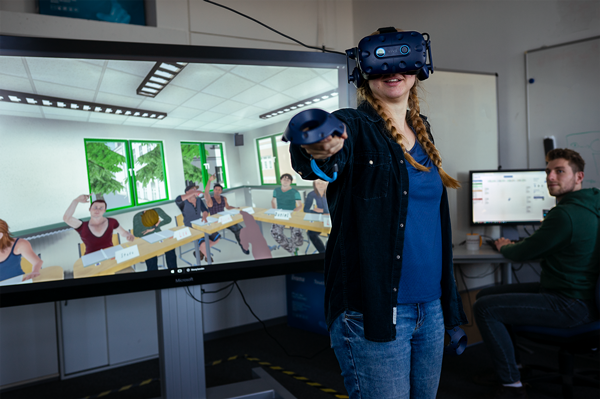Virtual reality simulations that teach residents how to prepare and react to natural disasters. Game-based systems that help unlock neurodiverse kids’ problem-solving skills and interest in STEAM (science, technology, engineering, the arts and mathematics). Artificial intelligence programs that help people with epilepsy remember to take their medicines.
These are the kinds of innovative educational tools University of Georgia researchers are developing to revolutionize how teachers teach and students learn.
Virtual learning, for example, has expanded since the Covid-19 pandemic, offering techniques for reaching disadvantaged communities in ways brick-and-mortar schools cannot. Researchers, therefore, are developing systems to make “hands-on” learning more engaging, inclusive, and cost efficient.
“When we’re designing systems, we’re doing it in a way that allows those systems to go into the wild effectively, confident that they are going to work,” said Matthew Schmidt, professor in the Department of Workforce Education and Instructional Technology at the Mary Frances Early College of Education. “That’s because we’ve engaged with the communities that will use these tools from their inception. The DNA of the communities they’re designed for is kind of baked into it.”
That is the primary goal for researchers like Schmidt—to present new instructional methods that combine experiential learning with traditional delivery methods like books, pamphlets, and instructional videos to close gaps for communities often marginalized in education.
Gaming for good
Many of Schmidt’s projects are centered around improving quality of life for individuals with disabilities. From autism to traumatic brain injury to epilepsy, his work advances understanding of how learning environments can be designed to be more inclusive, engaging, and effective.
“We need to work with the populations we’re targeting to develop empathy with their lived experience so we can build that into the tools we’re creating,” said Schmidt, leader of the Participatory, Interdisciplinary eXperience & Learning (PIXL) Lab. “Otherwise, it’s just going to be seen as something that doesn’t have a lot of relevance to their life.”
He’s launched Gaming for Good, a project that focuses on middle-school-aged neurodiverse students with learning challenges like autism, ADHD, dyslexia, and dysgraphia. Creating video games is used to unlock problem-solving skills, spark interest in science and technology, and open doors to future careers.
The project uses a Nintendo Switch game called Game Builder Garage, which involves placing “Nodons”—representations of code—and connecting them to program a game. By teaching users how to program and design a game, students also learn the data practices that are associated with computational thinking.
“We’re hoping to garner interest in STEAM fields, and to lead these kids to think of themselves as someone who might go into a STEAM career,” Schmidt said. “That’s really beneficial because we know that individuals with these neurodivergent tendencies tend to have some interesting splinter skills that can be particularly valuable—problem solving, remarkable attention to detail, affinity for technology. Although these people may have some challenges in some areas of their life, they also have tremendous abilities that can help not only to set them up for rewarding careers but also contribute to society in meaningful ways.”
PIXL has also worked on a project using a psychoeducation approach to help individuals who have sustained a traumatic brain injury improve their quality of life. The goal is to create a system that trains people to use a scaffolded problem-solving approach to overcome common challenges associated with TBI—problems that can affect relationships, employment, finances, and social activities.
Scaffolded problem-solving provides temporary support to learners to help them grasp new concepts and skills, gradually reducing the support as their understanding and independence increases.
“We’re augmenting that with an AI component, a chatbot, that acts as a coach to walk individuals who’ve experienced TBI through the problem-solving process,” Schmidt said.
As the individual improves their problem-solving capabilities, the chatbot will scale back the amount of coaching it provides.
Schmidt’s Epilepsy Journey project with teenagers focuses on building a gamified problem-solving website targeting executive function deficits—memory, organization, problem-solving—combined with online therapy that helps kids with epilepsy deal with everyday issues like remembering to take their medication.
“We’ve got very strong evidence that using the system really moved the dial in terms of some of these executive functioning challenges that the kids who were using the system were experiencing,” Schmidt said. “It’s making a difference in their lives.”
Scalability is the next challenge. How can Schmidt create versions of these tools that can be deployed specifically for online or virtual K-12 schools?
“We’re working on tools tailored specifically for that, in hopes that we can provide scalable coaching models,” Schmidt said. “Our coaches are going to be AI-powered VR avatars, which students can have a conversation with—talk about some of the challenges they’re having—and work through the science-backed process that we know is effective.”
Simulating disaster through virtual worlds
Grace Ahn is already implementing modern instructional methods with the potential to save lives. As director of the Center for Advanced Computer-Human Ecosystems (CACHE) at the Grady College of Journalism and Mass Communications—a collaborative endeavor between Grady, the College of Engineering, the College of Education and College of Public Health—Ahn has turned to virtual reality as a modern teaching tool.
Studies indicate, Ahn says, that messages delivered through an immersive experience like virtual reality have a more lasting impact than those delivered by video or printed pamphlets.
“People tend to be really good at underestimating the severity of risk and their own susceptibility for that risk. In the context of communicating risk, this is a huge barrier,” Ahn said. “What virtual reality does really well is deliver this message in a way that’s more salient. It stays at the top of your mind and for a longer period.”
Consider, for example, a hurricane. How often have people in the path of danger thought, Not for me. I’m going to be fine? Much of that, Ahn said, is because consequences are often difficult to identify.
“This sort of causal relationship—that what I do right now has an impact on the future—is really hard to see unless you have a crystal ball,” she said. “But virtual reality can demonstrate the future consequence in a visceral way.”
Social science theory has shown that threatening people doesn’t get them to change behavior. Illustrating the danger in a personally meaningful way, however, just might.
“You need give them the threat but also show them that sense of efficacy. How do they avoid the threat that they were just shown?” Ahn said. “You can now see, hear, and touch things that happen in the future because we can accelerate time and show you a future that is happening to you and no one else.”
Ahn used the specific example of a hurricane to demonstrate—in a very realistic way—the consequences of ignoring evacuation orders. Aimed at improving risk perception of coastal residents in Georgia and South Carolina, the two-part VR simulation first takes users into a coastal home where they feel safe, then shows what happens when a storm surge hits and flood waters rise over their head. Then the second part goes back to when there was time to evacuate, walking the viewer through procedures like learning to pack an evacuation bag, preparing their home by boarding up windows and securing potential flying debris, fueling their car, knowing where shelters are and when it’s safe to return home.
“Virtual reality is phenomenally strong in terms of building out that mental map, so when you come across the real deal, you at least have something to fall back on,” Ahn said.
What CACHE does well is bring its work to the community. Ahn is in the process of building a library of training simulations that deal with emergency preparedness.
Working closely with Georgia Sea Grant and Marine Extension at UGA and the South Carolina Sea Grant and National Hurricane Center, they’ve developed an emergency preparedness program called Weather the Storm. Anybody with access to a Meta Quest headset can download and “step into” the VR experience.
Ahn is working on similar simulations for wildfires—an increasing concern globally—and, in a project with Emory University, on dealing with hidden dangers of air quality issues associated with prescribed burns, a frequent practice in Georgia. Athens-Clarke County also reached out about creating a VR tornado experience.
“Disasters that really were not a part of our consideration for Georgia weather are now relevant and becoming more frequent, more intense,” Ahn said. “The emergency managers want to be ready. The whole idea of emergency preparedness is being ready before it hits, not after the fact.”
Making sense of knowledge
Not all innovation research relies on new technologies, however. Logan Fiorella, associate professor of educational psychology in the Mary Frances Early College of Education, studies and develops frameworks of how students “make sense” of what they are learning, particularly within the STEAM realm. His research applies the cognitive principles of learning by explaining, drawing, or enacting into the design of multimedia learning strategies, including instructional videos—which, as Ahn mentioned, can often fall short of intended goals.
Whether it’s low-tech pencil and paper or high-tech tablets, Fiorella provides recommendations for implementing methods and activities to engage students and support those sense-making processes, improving integration of new information with existing knowledge.
“I’m mainly interested in how students make sense of what they’re learning, how they take information—through words and pictures—and transform that into visible knowledge that they can apply to new situations,” Fiorella said.
He cites an example of getting students to learn about complex scientific systems by prompting them to digest it in ways they wouldn’t think of spontaneously. Given a text passage that describes, for example, the human circulatory system, students are asked to create their own visualization or drawing of the text.
“The idea is that the act of translating one verbal representation into a visual representation forces students to integrate the text with something in their existing knowledge,” he said. “They’re creating a totally new representation that wasn’t there before. What they create is forcing them to organize the information that’s presented in the text and, hopefully, not only organizing it but also interpreting what it means and how it works.”
It also works in reverse, Fiorella added. If given a diagram to study and asked to verbally explain it, students often can improve knowledge retention.
And, while his research isn’t necessarily focused on modern tools like Schmidt or Ahn, Fiorella said that AI tools have the potential to support these sense-making strategies.
“It can provide the kind of personalized prompting and feedback students often need in order to help facilitate generating high-quality explanations,” he said.
Ultimately, these innovations do more than convey knowledge—they give people agency.
Whether a neurodivergent student discovering a knack for coding, a teen with epilepsy gaining control over daily challenges, or a coastal resident rehearsing life-saving decisions before a storm arrives, these tools and practices invite users to see themselves differently—as capable actors in their own lives, equipped with information and the confidence to use it.
Quelle:
Foto: Virtual reality is just one of a host of ways researchers are revolutionizing the delivery of modern instruction. From AI to games to immersive learning, researchers like Grace Ahn, Matthew Schmidt, and Logan Fiorella are working to close critical gaps in education. (Photo by Sarah Freeman)






